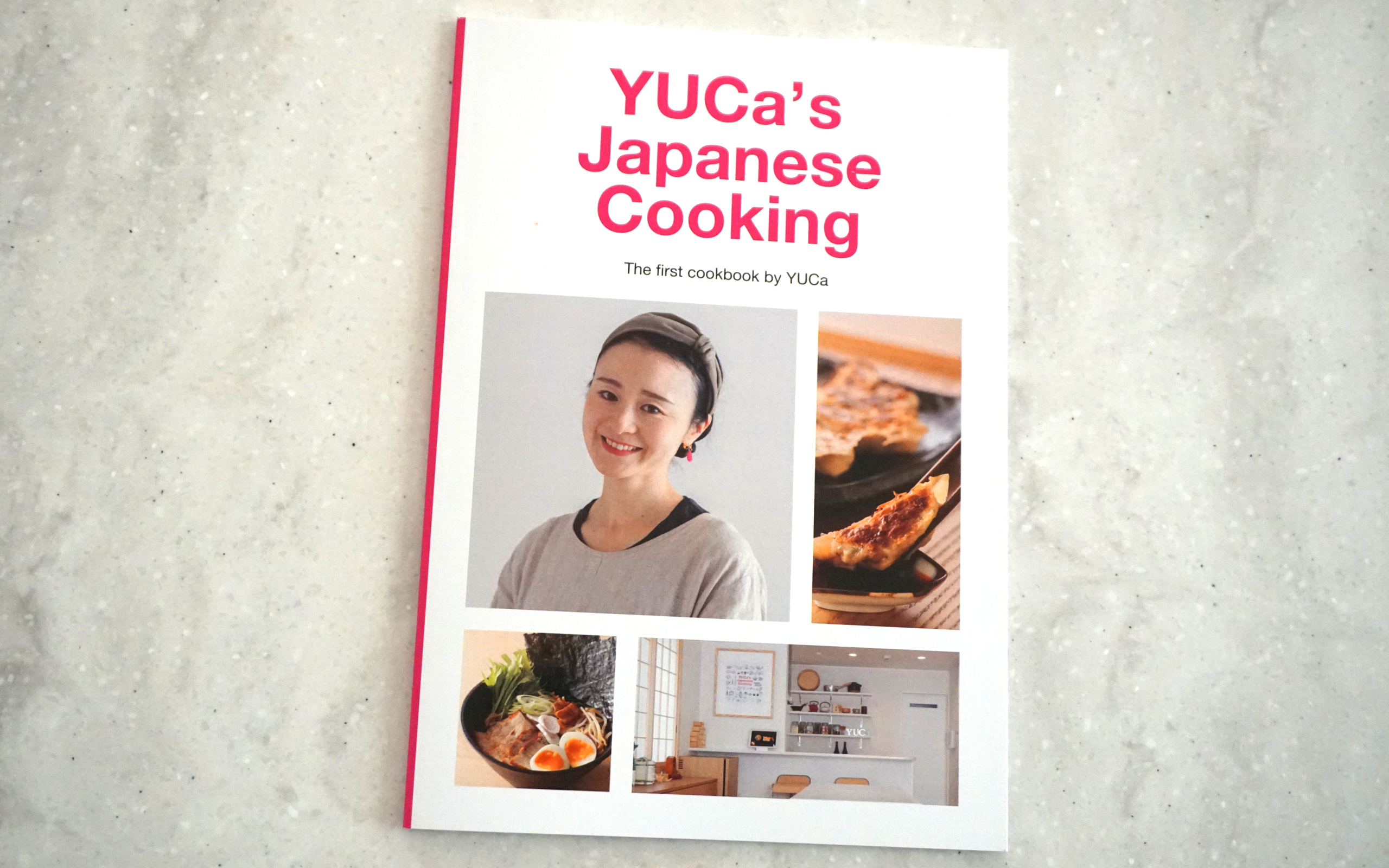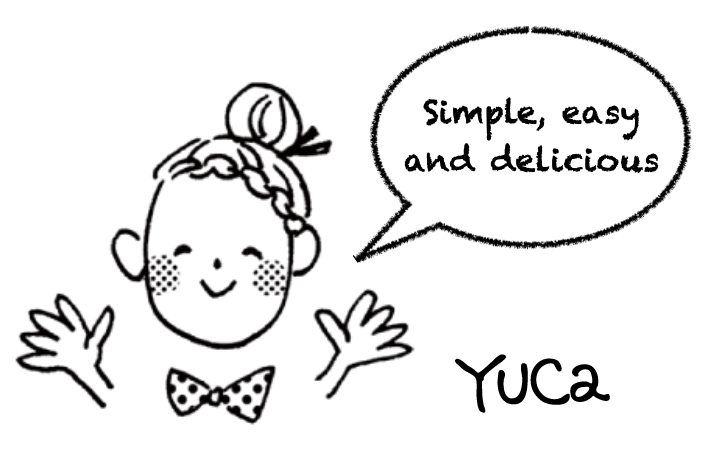Latest Posts
Annual Events and Food in Japan
Annual Event & Festive Food In Japan

1st – Shogatsu (New Year) : Osechi(-ryori), Fukubukuro, Shimekazari, Fukuwarai
7th – Nanakusa no Sekku (Seventh-Day New Year) : Nanakusa gayu
11th – Kagami Biraki (Opening the Rice-Cake Offerings) : Oshiruko
15th – Koshogatsu (Small Shogatsu) : Red bean rice porridge
20th – Hatsuka shogatsu : Ozoni

3rd – Setsubun (Seasonal Division) : Ehomaki
8th – Harikuyo (Memorial Service for Needles) : Tofu
10th – Hatsu-uma : Inarizushi

3rd – Hinamatsuri/Momo no Sekku (Doll Festival ) : Chirashizushi
21st – Ohigan (Spring Equinox) : Botamochi

Hanami (Cherry-Blossom Viewing) : Sakuramochi, Dango
8th – Hanamatsuri (Flower Festival)

5th – Tango no sekku,(Children’s Day) : Kashiwa-mochi, Chimaki

Koromogae (Seasonal Change of Clothing)
Around 10th – Nyu-bai : Plum syrup, Umeboshi

7th – Tanabata (Star Festival) : Somen

15th – Obon (Bon Festival) : Vegetable Tempura, Rice Dumplings, Udon, Inari Sushi

15th – Tsukimi (Moon Viewing) : Tsukimi Dango
Ohigan, Autumn Equinox : Ohagi

19th – Choyo no Sekku (Chrysanthemum Festival) : Kiku-zake, Kikuka-cha, Kiku-monaka *Sept.9 on Lunar Calendar
Undokai, Sports Festival : Bento
Ensoku, School Excursion : Bento

15th – Shichi-go-san (Festive Day for Children) : Osekihan, Chitose-ame, Tai no Shio-yaki

13th – Toshikoshi (Crossing over to a New Year)
Around 22nd or 23rd – Toji (Winter Solstice) : Azuki-gayu, Pumpkin
31st – Omisoka (Last day of the year) : Toshikoshi soba
Japanese culture : Fukuwarai
Fukuwarai (福笑い) is a traditional Japanese game often played during the New Year holiday. The name translates to “lucky laugh” or “happy laugh.”

In this game, players place facial features such as eyes, eyebrows, a nose, and a mouth onto a blank face shape, similar to a puzzle. The challenge is that the player is blindfolded, resulting in comically misaligned features.
The game is lighthearted and is meant to bring laughter and joy to participants and onlookers. It’s a popular activity among families and children, symbolizing fun and good fortune for the coming year.

Related video:
Tokyo Guide : VERT in Kagurazaka
Hidden in the heart of Kagurazaka lies a unique tea house crafted by a former pâtissier. Known for its intriguing pairings of tea and sweets, this spot offers an unforgettable experience with a fusion of unexpected elements.

The tea house, VERT, was established by the pâtissier, who spent many years perfecting the art of desserts, with the hope of “sharing the deliciousness of Japanese tea with more people.”
Their entirely reservation-based course begins with a carefully brewed tea and features six to seven pairings of desserts and teas, followed by a rice dish and tea, and concludes with matcha and wagashi (traditional Japanese sweets).
The course, named “Chasoryūsui” (茶湊流水), is a playful twist on the Japanese idiom “kōunryūsui” (行雲流水), meaning “to go with the flow like drifting clouds or flowing water.” It conveys the concept of “enjoying tea freely, as one would in a harbor where people and cultures converge.”

The first pairing was a strawberry daifuku, but not your ordinary kind. It featured fermented strawberries, the gentle sweetness of rose and white bean paste, and the soft texture of mochi—a perfect harmony of flavors.
Read More
Tokyo Guide : Amam Dacotan
Following the success of its sister shop I’m Donut – known for its wide selection of sweet and savoury doughnuts and legendary long queues – Fukuoka-born Amam Dacotan has finally opened up shop in Omotesando.

Have you ever tried Japanese bread? I’m a huge bread lover, to the point where my family finds it a bit ridiculous, but one bakery I’ve been eyeing for a while is Amam Dacotan. The original store is in Fukuoka and is a sister shop of the popular “I’m Donut,” which still has long lines to this day. Recently, they opened a location in Tokyo, so I had to check it out.
This bakery gained fame during the maritozzo boom in Japan, making beautiful renditions of the traditional Italian pastry filled with fresh cream and various toppings. The Omotesando store, which is so photogenic it hardly feels like a bakery, offers over 140 different freshly baked items every day. One of the most popular items is the “Dacotan Burger,” packed with plenty of purple cabbage and homemade sausage.

While many customers opt for takeout, there are about five tables outside where you can enjoy your treats on-site with a drink. However, I stood in line for about 30 minutes before the shop opened on a weekday, and online reviews mention wait times of up to one to two hours, so I recommend arriving early!
Read More
Isobe-yaki (磯部焼き)
Isobe-yaki is a traditional Japanese dish that typically consists of grilled or pan-fried food, often mochi (rice cake), which is brushed with a savory sauce and then coated with nori (dried seaweed). The term “Isobe” refers to the practice of grilling or frying food with the addition of seaweed, while “yaki” means grilled or cooked.

Here’s a breakdown of its common components:
- Mochi: The most typical base for Isobe-yaki is mochi, which is a sticky, glutinous rice cake. It’s often grilled until it becomes crispy on the outside while remaining soft on the inside.
- Soy Sauce-Based Glaze: The mochi (or other ingredients) is brushed with a sauce made from soy sauce, mirin, and sometimes sugar, giving it a slightly sweet and savory flavor.
- Nori: After being grilled and glazed, the mochi is wrapped in a sheet of nori (dried seaweed), adding a salty and umami taste that complements the sweetness of the sauce.
Although Isobe-yaki is often associated with mochi, the dish can also be made with other ingredients, such as fish, taro, or vegetables, all prepared in a similar manner—grilled and then coated in soy sauce and wrapped with nori.
This dish is popular as a snack or side dish and is sometimes served at Japanese festivals or during the colder months. It has a warm, comforting flavor that blends the savory taste of soy sauce with the umami of nori and the chewy texture of the grilled mochi.
Tokyo Guide : Ukiyoe Immersive Art
Ukiyo-e is a traditional Japanese art form that flourished during the Edo period (17th–19th centuries). It consists mainly of woodblock prints and paintings depicting scenes of everyday life, landscapes, kabuki actors, beautiful women, and historical events. The name “ukiyo-e” (浮世絵) translates to “pictures of the floating world,” reflecting the vibrant urban culture of the time.

I recently visited this exhibition “Ukiyoe Immersive Art” with my family. Ukiyo-e, which I had perceived as small, flat artworks, was projected onto a massive screen, with the characters and landscapes moving alongside sounds. It felt as if we had stepped right into the world of the artwork. To my surprise, even the kids were drawn into the world of ukiyo-e. (My daughter was even dancing for some reason!)
There were also sections where visitors could experience games from that era, which seemed to be a lot of fun for kids living in modern times. It seems to have become one of the exhibitions they’d like to visit again.
This exhibition runs until March 31, and it’s a must-see for anyone interested in ukiyo-e. Even if you’re not familiar with it, the unique and dynamic presentation style and its immersive world are sure to draw you in. I highly recommend checking it out during your stay in Japan!

For more about this exhibition, please check their information!
https://www.ukiyoeimmersiveart.com/tokyo/en
Read More
Tokyo Guide : Yamamotoyama in Nihonbashi
Yamamotoyama (山本山) is a long-established Japanese company known primarily for its high-quality tea and nori (seaweed) products. Founded in 1690 (Genroku 3), it has a rich history and has been an integral part of Japanese food culture since the Edo period.

They have a shop in Nihonbashi area and I ordered their signature menu, “Nihonbashi”!
The long, slender bento box consists of three layers. At the very bottom is Koshihikari rice, a quintessential representation of Japanese white rice. On top of that is a half-sized sheet of roasted nori (seaweed). Another layer of white rice follows, topped with two distinct halves: one side features nori seasoned with dried baby sardines, olive oil, and salt; the other side showcases two types of nori—shredded nori drizzled with homemade soy sauce and crumbled seaweed in its pre-sheet form. With each bite, a variety of seaweed flavors unfolded in my mouth.

As a finishing touch, a single piece of mashed Nanko umeboshi (pickled plum) sat atop the dish, adding a nice accent and serving as a refreshing palate cleanser. If you want to fully enjoy the authentic taste of Japan’s unique seaweed, I highly recommend it!
Read More
Tokyo Guide : Matsubaya-Saryo (松葉屋茶寮)
Matsubaya Saryo (松葉屋茶寮) is a Japanese café known as a “bonsai tea house,” located on Kottō-dōri in Minami-Aoyama, Tokyo. Here, visitors can enjoy high-quality tea and traditional Japanese sweets while admiring the beauty of exquisite bonsai trees.

The interior of the café is filled with bonsai, antiques, and artworks, creating a serene atmosphere infused with Japanese culture. The attached *Hakobune GALLERY* hosts exhibitions and sales of antiques, contemporary art, ceramics, and unique furniture, and also operates an official e-commerce site.

Read More
Osechi Ryori (お節料理)
Osechi Ryori (お節料理) is a traditional Japanese cuisine enjoyed during the New Year holiday, symbolizing gratitude for the past year and prayers for prosperity and health in the coming one. The dishes are meticulously prepared and packed in special multi-layered lacquer boxes called jubako(重箱), which resemble bento boxes.

This tradition dates back to the Heian period (794–1185) and has evolved over centuries. Each food item in Osechi holds a symbolic meaning, often based on wordplay or auspicious associations. Here are some examples in more detail:
– Kuromame (sweet black soybeans): The word mame (豆) also means “diligence” or “hardworking” in Japanese, symbolizing a wish for good health and industriousness.
– Kazunoko (herring roe): With numerous tiny eggs, it represents a wish for fertility and the prosperity of one’s descendants.
– Kuri-kinton (sweet chestnut and mashed sweet potato): Its golden color is associated with wealth and financial fortune.
– Datemaki (sweet rolled omelet): Its scroll-like shape resembles traditional scrolls, symbolizing learning and cultural achievement.
– Tazukuri (candied dried sardines): Once used as fertilizer in rice fields, it represents a bountiful harvest.
– Ebi (shrimp): Its bent shape resembles an elderly person’s back, symbolizing long life and longevity.
– Kohaku Kamaboko (red and white fish cake): The colors red and white are considered auspicious in Japanese culture, symbolizing happiness and celebration.
The preparation of Osechi is often done in advance to allow families to rest and enjoy the New Year without cooking. It also reflects the Japanese principle of omotenashi (hospitality), with each dish showcasing care and attention to detail.
Eating Osechi with family or loved ones is an essential part of welcoming the New Year, offering a delicious taste of Japan’s rich culinary traditions and cultural values.
Read More
Happy New Year of 2025!

Happy New Year!
On New Year’s Eve, after finishing work, I focused on making a costume for my daughter’s performance. I didn’t want to carry over tasks I’m not good at into the new year, so I pushed through and managed to finish it. That night, my son stayed up late for the first time, so we got to celebrate the countdown together.
On New Year’s morning, as per our annual tradition, I watched the televised broadcast of the Diamond Fuji. Seeing it gave me a sense of relief and peace.
After breakfast with my family, I took our beloved dogs, Mario and Luigi, for a walk. We also stopped by the local shrine to pray for everyone’s health in the year ahead.
Later, my husband surprised us with tickets to the Tokyo Skytree observation deck. We took the Arakawa Line (Tokyo Sakura Tram) to get there.
Seeing Mt. Fuji in person after watching it on TV earlier felt a bit surreal, but it also gave me a deep sense of joy, as though the mountain has always been watching over us.
And so, 2025 has begun!
This year, I plan to focus even more on holding cooking classes at my home kitchen studio, while strengthening my efforts to share information about Japanese food culture and lifestyle through social media and blog writing. I’m excited and nervous to see what kind of changes will unfold!
Finally, I would like to extend my New Year’s greetings to you and your loved ones. May 2025 be a year filled with happiness, health, wealth, peace, and success.
Warmest regards,
YUCa







































